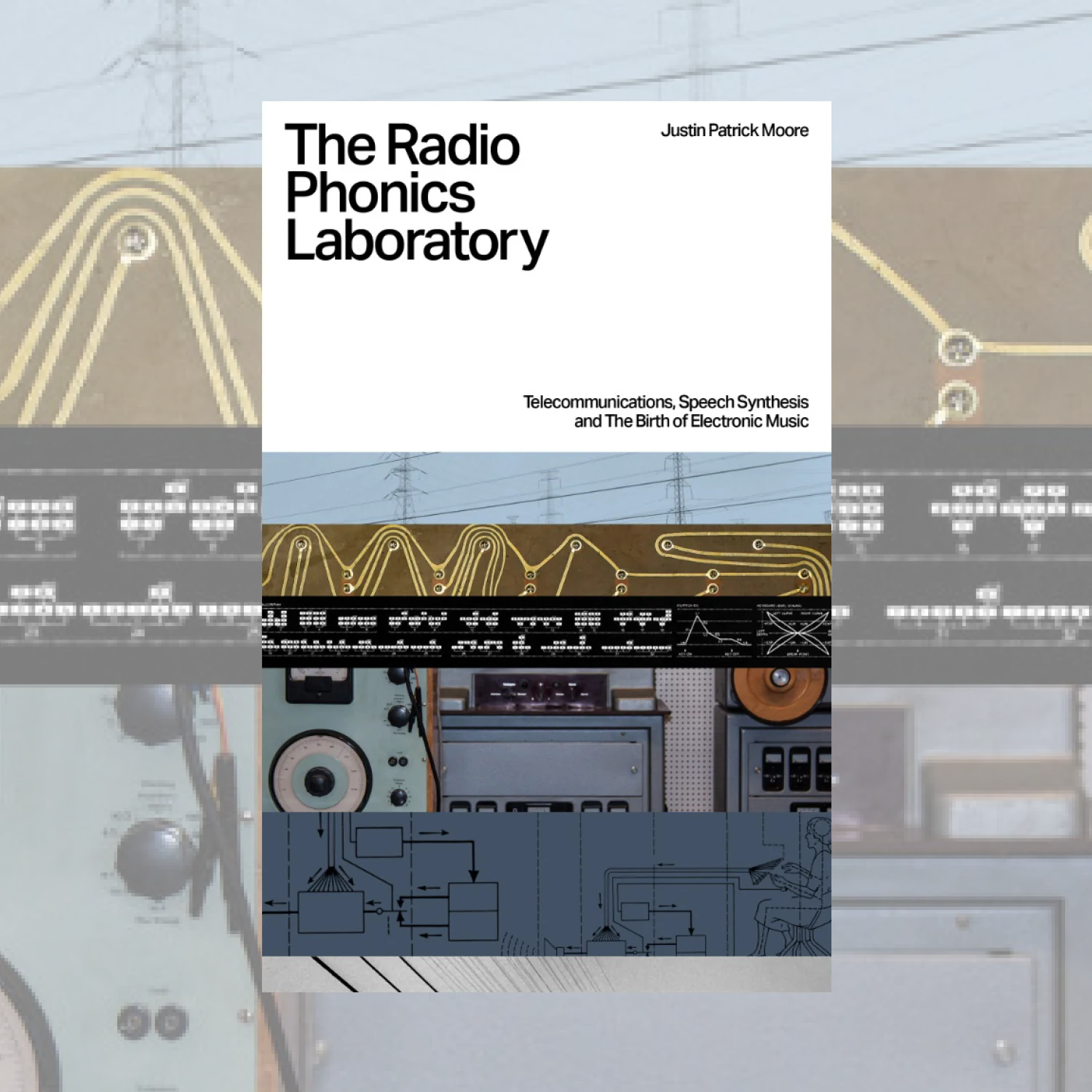Fastradioburst23 here to let you know about a brand new book from Imaginary Stations contributor Justin Patrick Moore. The Radio Phonics Laboratory: Telecommunications, Speech Synthesis, and the Birth of Electronic Music is a radiocentric look at the origins of electronica. Radioheads will find much to enjoy in the pages of this tome including:
- Elisha Gray’s Musical Telegraph, arguably the world’s first synthesizer that used telegraph wires to send music down the line to distant listeners.
- Lee De Forest’s Audion Piano. Radio pioneer Lee De Forest used his invention of the triode vacuum tube, or audion, to make an electronic musical instrument, perhaps his least contentious invention!
- The radio work and espionage activities of Leon Theremin, who worked as an engineer at a distant station deep within the Soviet Union where he discovered the principles to make his famous antenna-based instrument.
- The avant-garde antics of the Lost Generation composer George Antheil and his collaboration with actress Hedy Lamarr that led to the development of the spread spectrum suite of transmission techniques that now permeate our everyday life wherever there is WiFi.
But that’s not all! At the heart of this narrative is the evolution of speech synthesis. Spanning the groundbreaking work of Homer Dudley at Bell Laboratories with his work on the voder and vocoder to the dual discovery of Linear Predictive Coding from the research done by Fumitada Itakura at Nippon Telegraph and Telephone in Japan to the parallel discoveries in the same field made by Manfred Schroeder and Bishnu S. Atal at Bell Labs. Linear Predictive Coding gets put to work whenever someone picks up a cell phone to make a call, or when they get on their DMR radio to join a net with their fellow ham radio friends across the world. Linear Predictive Coding was later put to work in the compositions of early computer music pioneer Paul Lansky at Princeton.
Tracing the early use of the vocoder in enciphered radio transmissions between Churchill and Roosevelt in World War II to its use by Robert Moog and Wendy Carlos, this is the story of how investigations into the nature of speech generated a tool to be used by the music makers who merged their voices with the voice of the machine.
But wait, there’s more! The creative use of these phonic frequencies really took hold when radio stations and radio companies spearheaded the creation of the first electronic music studios. These laboratories include:
- Halim El-Dabh’s use of wire recorders loaned from Radio Cairo to create the first pieces of what was later called musique concrète, where raw sounds were manipulated to create a new kind of music.
- Pierre Schaeffer’s creation of the Groupe de Recherches Musicales (GRM) under the auspices of the Radiodiffusion Nationale station in France, leading to the subsequent spread of musique concrète.
- The genesis of the Studio for Electronic Music of the West German Radio (Westdeutscher Rundfunk) born out of early developments in elektrische music made by the countries experimental instrument builders.
- The subsequent building of an electronic music studio at NHK in Japan.
- The story behind the “sound-houses” of the legendary BBC Radiophonic Workshop, and its pioneers Daphne Oram and Delia Derbyshire.
- The development of the Columbia-Princeton Electronic Music studio made in conjunction with the RCA company and the building of their gargantuan instrument, The RCA Mark II Synthesizer.
- And further explorations in the work being done at Bell Labs where the computers made music under the guidance of Max Matthews leading to creative breakthroughs from composers Don Slepian and Laurie Spiegel.
Of particular interest in this realm to the radio buff is the work of John Chowning, a composer who worked out the principles of FM synthesis, essentially figuring out how to do frequency modulation in the audio domain. He went on to create the Center for Computer Research in Music and Acoustics at Stanford, which became a model for the kind of sound laboratory later implemented in France at IRCAM, Institute for Research and Coordination in Acoustics/Music.
This the story of how electronic music came to be, told through the lens of the telecommunications scientists and composers who transformed the dits and dahs of Morse code into the bleeps and blips that have captured the imagination of musicians and dedicated listeners around the world.
The Radio Phonics Laboratory is available directly from Velocity Press here in the UK and Europe. North American readers can find it on Bookshop.org here , Amazon.com here and fine bookstores everywhere.

